#Knolle Berlin
Text

Rare photograph of Madonna by Dustin Pittman taken at Danceteria, circa 1979
38 notes
·
View notes
Photo

Madonna at Danceteria, New York City, circa 1979. Photographed by Dustin Pittman
31 notes
·
View notes
Text
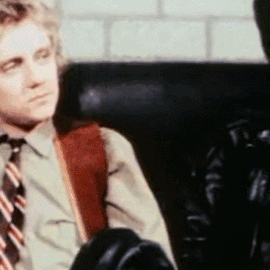

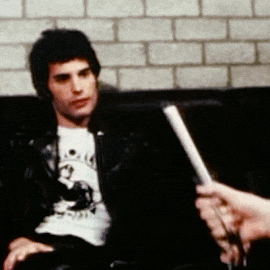






Freddie Mercury wearing a t-shirt from Die Knolle, a gay Leather club that opened in Berlin in the mid-1970s
#freddie mercury#freddiemercurygifs#freddiemercuryedit#queen band#queen#queenband#queenbandedit#queenbandgifs#myedit#freddie#freddiewearingleather
175 notes
·
View notes
Text
Saskia Reeves Breaks Down Jackson Lamb’s Shocking Betrayal
TheWrap: At first, Catherine is very touched that Lamb has come to her rescue. And then he tells her that her late boss was a traitor who was setting her up to take the fall for him. That’s a huge, huge betrayal.
Saskia Reeves: Yeah. It’s a shocking moment for her. Which is why I think she says, if you don’t mind my French, “F,U. Jackson Lamb, f—k the lot of you.” I think she’s just had it, that’s it. She’s had enough. And Catherine never swears. Jackson Lamb swears all the time, but she never swears. So that was quite a big thing for her to do that.
So of all the things that Lamb says to Catherine, what do you think was the most hurtful?
That Charles was only keeping her close because she was a drunk. [Lamb] helped her go to rehab. He helped her, she thought, recover. And I think after Charles Partner was killed, or when he committed suicide, as she thinks, she fell off the wagon a few times.
Lamb tells her, doesn’t he, in the end of Season 1 that he gave Charles Partner the gun. But she always blamed herself for his death. And she falls off the wagon, and then gets back on it because otherwise she’d probably kill herself.
And that’s when Lamb picks her up and says, “Okay, I’m going to offer you a job.” I imagine her self-esteem is very low. It’s a job that she can do incredibly well. She hasn’t sunk to the bottom like all the other [agents in Slough House].
She really gets a chance to shine this season as she gains the trust of her kidnappers and mines them for information.
I don’t know if anybody would have quite approached it the way she did. Knowing what she knows, and getting sort of caught up in their emotional reason why they need the information that they need. You have to remember she’s not a spy. She’s a secretary, a very, very good secretary.
Do you think Lamb is actually fond of her?
Yes. They’ve been part of MI5 since before the [Berlin] wall came down, they’ve been through so much together. They know the same people from before. And they’re both more analog than digital. She knows [he used to be an] exemplary member of MI5. And he knows her to be an incredibly experienced supporter of the head of MI5. I think he respects her, but he’s also a frightful bully and, and in some areas, a coward who doesn’t want to face his own alcoholism.
So he pushes her, he keeps pushing her to see how far she’ll go, to test her. I think she interprets that as, “He’s trying to break me. He’s trying to push me off the wagon, and I refuse to be pushed off the wagon.” And the longer she stays sober, the stronger she gets. And I love how strong she is. She’s very smart. And she’s kind but she’s f—ked up. Which is what holds them all together, isn’t it?
He has one one big secret left: As the viewers already know, he was the one who killed Charles.
Right. That hasn’t come out yet. Which is why when she asks him, “Do we kill our own?,” she’s not aware of how close she is to the truth.
I haven’t read the books but I assume that does come out at some point.
It does come out, but I can’t remember which book it happens in. I’ve read them all a few times.
Actually, it’s a conversation I want to have with the showrunner Will Smith. What are we going to do with this piece of humming knowledge, this thing that won’t go away? This thing that Jackson did, but he did it under the umbrella of David Cartwright (Jonathan Pryce). And that relationship will be unfolded in Season 4.
We get a few glimpses of Catherine in the Season 4 teaser trailer. Will we see her back at Slough House?
I can’t say anything!
Source: Sharon Knolle - The Wrap
26 notes
·
View notes
Text
One of Knoll's [secretary-general of the International Federation of Sports Physicians] letters ended up in the hands of Carl Diem, the German official who, in addition to his work on the Organizing Committee of the Berlin Olympics, was now a prominent member of the IAAF [International Amateur Athletic Federation] "Two bogus cases of hermaphrodites have been in the press lately," Knoll wrote to Diem, citing Koubek and Weston by name, "proving that women's elite sports contain elements that do not belong there and must be eliminated at all costs." If the Organizing Committee wasn't proactive about the threat of "abnormal" athletes playing in women's sports, Knoll warned, then the Nazis risked enduring accusations of cheating at the forthcoming games.
Knoll concluded: "I request that all female participants in the Olympic Games should have their gender checked beforehand by a specially-commissioned doctor." He suggested that these checks be done at the women's dormitories shortly before the start of the Berlin Olympics. Since all the women were going to live together in the same dorm, called the Friesenhaus, implementing a sex test should require "no technical difficulties." Knoll made no mention of testing athletes in men's competitions. In his framing, trans and intersex women, whom he called "hermaphrodites," a common term at the time that in Knoll's writing retained a derisive edge, were the only group worthy of concern. The fact that one of the inspirations for his letter, Koubek, was no preparing to play in men's sports and therefore would not have even been examined under this framework, did not seem to cross his mind. Knoll signed off, "Heil Hitler!"
Knoll still had not developed a clear explanation of ow he wanted sports officials to "check" the female athletes or what they should even be looking for: What defined an "abnormal" athlete in the first place? Though he occasionally nodded to the misconception that certain "abnormal" women possessed athletic advantages, he didn't make clear what those advantages were. Would have have considered a woman with too much muscle or body hair to be "abnormal," and at an advantage, and therefore worth disqualifying on the grounds of cheating? What about tall women? Didn't they have an advantage in some sports, too? Or was he simply concerned with genitalia -- and if he was, what genitalia would he have considered disqualifying?
Reading between the lines of these letters underscores the truth: there was no coherent ideology or intellectual idea behind Knoll's push for sex testing. For as adamant as he was that the Olympics needed to regulate athletes on the basis of their bodies, he seemed to spend shockingly little time considering what those regulations would look like. He simply hadn't thought it through. Instead, Knoll's push for sex testing could be seen as a reactionary measure, colored almost entirely by his own anxieties about masculinity and femininity -- and, perhaps not incidentally, by his commitment to eugenics.
Knoll's campaign for medical exams sounded a lot like his prior statements urging that Nazi leaders purge "unsuitable elements," a group that he included to mean Jewish and non-white people, from sports. To Knoll, regulating women's bodies was probably an extension of that fear of difference. A woman who didn't mean his standards of femininity, whatever those standards were, represented a challenge to the eugenic state. The Nazis associated masculine women with sterility and lesbianism; they were seen as unable to reproduce and, therefore, should be swept to the margins of society.
Michael Waters, The Other Olympians: Fascism, Queerness, and the Making of Modern Sports (Farrar, Straus and Giroux, 2024), 173-175.
#olympics.txt#olympics#idk what else to tag this but this section of the book#which has been interesting all along#is really getting into it now#bold is mine#i will post a few other snippets but this one looked really bad posting excerpts from the page so i typed it lol
3 notes
·
View notes
Photo

Heliot Emil HQ & disruptive berlin . . . credit: @brendahashtag . #pierrejeanneret #rickowens #rickowensfurniture #isamunoguchi #mariobellini #camaleonda #ciniboeri #ettoresottsass #jeanprouvé #marcelbreuer #pierrepaulin #dieterrams #bauhaus #knoll #sergemouille #milobaughman #lecorbusier #togosofa #eameschair #cassina #artemide #interiordesign #architecture #brutalism #vitra #industrialdesign #industrialfurniture #loftinterior #vintagefurniture https://www.instagram.com/p/Cj40kwlo346/?igshid=NGJjMDIxMWI=
#pierrejeanneret#rickowens#rickowensfurniture#isamunoguchi#mariobellini#camaleonda#ciniboeri#ettoresottsass#jeanprouvé#marcelbreuer#pierrepaulin#dieterrams#bauhaus#knoll#sergemouille#milobaughman#lecorbusier#togosofa#eameschair#cassina#artemide#interiordesign#architecture#brutalism#vitra#industrialdesign#industrialfurniture#loftinterior#vintagefurniture
3 notes
·
View notes
Text
Week 1 - Looking at designers Pt 1
As our first SDL, we have been asked to research further about the designers that will be featured in our brochure, define our audience and investigate other brochure designs.
Verena Gerlach: Born 1971 in Berlin, she began studying visual communication at Kunsthochschule Berlin Weibensee. After she had graduated in 1998, she founded her own design studio for graphic design, type design and typography. Not only does she work with all kinds of typographic print, she also art directed several video clips and worked on typographic production for interactions with contemporary artists. She works as a freelance book designer for different art book publishers as well as providing lectures and workshops about the type and graphic design all over the world.
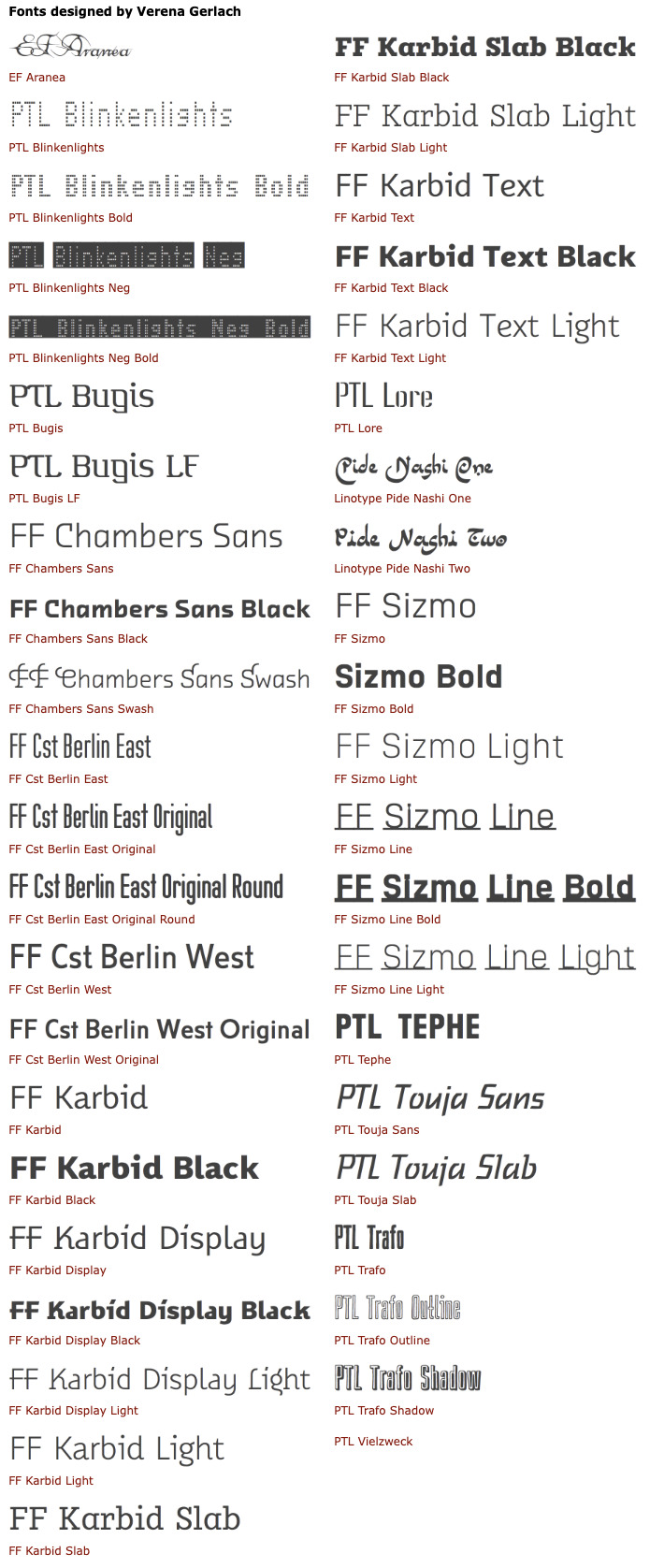
Johnson Witehira: Born in 1982 in New Zealand. He is of Ngāi Tū-te-aura descent and is the co-founder of both Indigenous Design and Innovation Aotearoa (IDIA) and Waahi Wairua. After completing his doctorate in Maori visual art, his mission has been to bring Maori culture into all aspects of New Zealand life. He has led design projects for New Zealand's most prominent organisations, such as; TVNZ, The Auckland International Airport and Auckland city council. Some of his most significant projects consist of developing the first set of Maori alphabet blocks and designing the first functional Maori- specific typeface. As an academic, his focus has been directed towards decolonised approaches to teaching art and design.
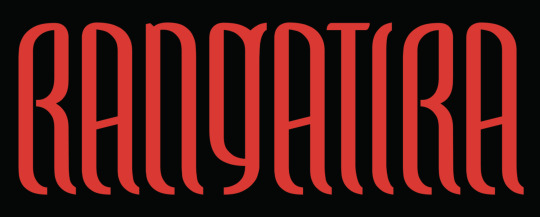
Nadine Chahine: Born in 1978 in Beirut, Lebanon, she is an award-winning Lebanese type designer. She has an MA in Typeface Design from the University of Reading, UK, and a PhD from Leiden University, The Netherlands. She usually focuses her research towards eye movement and legibility studies for the Arabic, Latin and Chinese scripts. She has many awards, two of which are Excellence in Type Design from the Type Directors Club in New York in 2008 and 2011. Her most popular typefaces include; the best-selling Frutiger Arabic, Neue Helvetica Arabic, Univers Next Arabic, Palatino, Palatino Sans Arabic and Koufiya.
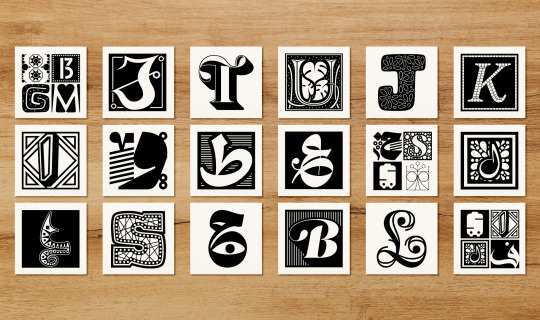
Carol Twombly: Born June 1959 in Massachusetts, United States, she is known as a well-known Type designer. She studied at the Rhode Island School of Design, under professor Charles Bigelow and also studied at the Bigelow & Homes Studio. In 1988 She joined Adobe Systems when the company were hiring young designers for their newly launched type department. During her time at Adobe, she designed some of the most recognisable and popular typefaces, including Trajan (1989), Charlemagne (1989), Lithos (1989), Adobe Caslon (1990), Myriad (1991, with Robert Silmbach), Viva (1993), Nueva (1994) and Chaparral (1997). In 1994, She won the Prix Charles Peignot, given by the association Typographique Internationale (ATypI), the first woman and second American to receive this prize.In 1999, She decided to leave Adobe to pursue other artistic interests.

References:
0 notes
Text
Germany: 952,000 People Arrived From Ukraine in Feb-Aug Period : Inside US
Germany: 952,000 People Arrived From Ukraine in Feb-Aug Period : Inside US
BERLIN (Reuters) – Some 952,000 people arrived in Germany from Ukraine in the February-August period of this year, the Federal Statistics Office said on Monday.
Most arrived in March (431,000) and April (198,000) — the first two months after Russia’s invasion of Ukraine, the office added.
(Writing by Paul Carrel, editing by Kirsti Knolle)
Copyright 2022 Thomson Reuters.
Political Cartoons on…

View On WordPress
0 notes
Photo

“Sitzende mit Bühnenmaske von Oskar Schlemmer im Stahlrohrsessel von Marcel Breuer, um 1926″,
Foto: Erich Consemüller, Bauhaus-Archiv Berlin / © Dr. Stephan Consemüller
#art#photography#mask#eric consemuller#marcel breuer#seat#chair#vintage photography#1926#bauhaus#buhnenmaske#oskar schlemmer#berlin#wassily#knoll
84 notes
·
View notes
Photo

Eero Saarinen for Knoll with new upholstery #eerosaarinen #knoll #new #ulholstery #reupholstered #abstract #chrome #vintageluxury #interiordesign #interiorinspiration #interiordesignmag #midcenturydesign #design #losangeles #newyork #london #paris #berlin #beijing #tokyo #rotterdam #tedgallery #tanteeefdesign (bij Rotterdam, Netherlands) https://www.instagram.com/p/B0duQZ3I6e0/?igshid=ndofc4huetvx
#eerosaarinen#knoll#new#ulholstery#reupholstered#abstract#chrome#vintageluxury#interiordesign#interiorinspiration#interiordesignmag#midcenturydesign#design#losangeles#newyork#london#paris#berlin#beijing#tokyo#rotterdam#tedgallery#tanteeefdesign
8 notes
·
View notes
Text
Türchen 8 - Der hat doch nen Knax(el)!
Jens Axel war ein vielbewanderter Mann.
Kam er doch ursprünglich von den friedlichen bayrischen Kuhweiden, wohnte er nun zusammen mit seinem Lebens- (und Leidens) genossen Michael Knolle in einer gut besuchten Ecke Berlins. Er war durchaus zufrieden mit dieser Wohnlage. Micha und er mieteten ein eher teureres Apartment mit gutem Ausblick auf die Berliner Stausituation, und wenn er sich vor offenem Fenster auf Durchzug an seinen Partner und seine selbstgestrickte Wolldecke kuschelte, lernte er die Berliner Frischluft immer mehr zu schätzen. Da er in seinem Herzen jedoch würde er für immer ein Kuhjunge bleiben würde, durfte der Michael auch manchmal auf ihm reiten.
Ja, zugegeben, er vermisste die Zeit wenn er für die Bravo mit seiner Lieblingskuh posieren durfte, aber inzwischen hatte es ihn in das Schauspiel verschlagen. Zuerst dienten nur seine Beine als Filmmaterial, waren sie durch das viele Kuhreiten in seiner Jugend doch außergewöhnlich O-förmig und damit ein perfektes Alleinstellungsmerkmal. Doch dann gelang Jens der (semi-erfolgreiche) Durchbruch: Erik Krypta wollte ihn unbedingt als den jungen Dieter in Übernatürlich sehen, einer durchaus realistischen Serie die auf RTL ausgestrahlt werden sollte. Also realistisch in dem Sinne, dass es Engel und Dämonen natürlich wirklich gab, sie waren nur äußerst selten und vermieden den Auflauf von großen Menschenmassen.
Und jetzt war er hier, liiert mit einem Realitätslebens-Engel und im Ja-Zwei-Fallaus mit Jarick Pudeldackel, weil er einmal zu viel seine Frisur beleidigt hatte. Oder so.
Vor allem jedoch war er auf der Suche nach gutem Schmuck für den Weihnachtsbaum, nachdem Micha aus Versehen alle Christbaumkugeln aus dem 16. Stock geworfen hatte. Und das war gar nicht so einfach! Denn der meiste Weihnachtsschmuck war bereits ausverkauft, und der einzige, den Jens bis jetzt noch gesehen hatte, hatte fette Aufdrucke von Jarick, Michael und seinen Gesichtern drauf. Kein Wunder, dass die niemand kaufen wollte, und Jens natürlich auch nicht, war er doch kein Narzisst. Nicht mal im altbewehrten KaDeWe gab es vernünftige Sachen, und so musste Jens sich wohl oder übel daran machen, selbst Schmuck zu basteln. Bewaffnet mit ein paar Stiften, Fäden, und Gerds besten Spreewaldgurken als Imbiss für zwischendurch, krizelte er ein paar wunderschöne Zeichnungen auf Buntpapier. Eine kunstwissenschaftliche Analyse würden diese selbstgemachten Kugeln vielleicht nicht überleben, aber Michael, der die Erziehung einer Waldorfschule genossen hatte, würde Jens Kreativwerk bestimmt erfreuen. Und es ging ja um die Idee, nich?
Als Jens voller Vorfreude sein Apartment betrat, glaubte er seinen Augen kaum. Nicht nur war die ganze Wohnung voller Lametta, nein: Auf der Spitze des Weihnachtsbaumes thronten zwei Mini-Pappaufsteller von Jens und Michael, nur gehalten durch die Kraft von Gaffa-Tape, und auf ihren Gesichtern eine Ruhdolfphsnase.
“Iebrrascha!” rief Michael aus einer Ecke, auf seinem Kopf ein Stoffgeweih. “Des isch se schee wie du.”
Hatte Michael etwa aus Vorwand den ganzen Weihnachtsschmuck aus dem Fenster geworfen um ihn mit dieser Weihnachtsdeko zu überraschen? Damit hatte Jens nun wirklich nicht gerechnet. Manchmal war der Micha doch ein bisschen verrückt. Aber dafür liebte Jens ihn nunmal!
Bonus: Jens selbst-gemalte Christbaumkugel

#übernatürlich#adventsnatürlich#german#adventsnatuerlich#knaxel#dieter wuppertal#michael knolle#jens axel
25 notes
·
View notes
Text
Frederick and Mary Magdalene
Just came across this piece of info in an essay about Watteau which set I-
After the conclusion of the seven years war, Frederick decorated a room (probably in his own apartment) in the Potsdam city palace with 11 paintings, of which four Watteaus, five Lancrets, one Pater -- all fêtes galantes (courtship parties), which in Frederick’s younger days was his favorite genre to hang in private rooms -- AND one copy of Correggio’s Penitent Magdalene (or Magdalene reading/in meditation), made by a Berlin painter Romandon in 1695.
It’s such a deliberate and meaningful arrangement, and such a sight to imagine, that amongst the lovely country scenes by Watteau and pupils, there’s a hermit Saint Mary Magdalene, retreating into a secluded place to spend the rest of her life alone... In a word, I believe that Fritz was full-on identifying with her.
If we take the traditional (read: medieval) backstory of Magdalene before she was converted - that she led an extravagant life, then we can perhaps even interpret this arrangement further: that in this room overlooking the Lustgarten-turned-parade-ground in front of the palace, he, like her, devoted himself into the pursuit (and pleasure) of study, yet was always surrounded by faded dreams of a past filled with lost and irrecoverable love.
The Potsdam city palace was destroyed in 1960. The copy of Correggio’s Magdalene is now lost (I assume the original is lost too, since i can’t find pictures of it after the 1910s?), but I’ve found a few copies and prints to illustrate what it may have looked like:
--
Engraving of Mary Magdalene reading in the desert, Johann Heinrich Friedrich Ludwig Knolle (x)

A Meissen porcelain plaque from 19th century, after the Correggio in Dresden (x) (i’m just impressed with the fact that this is porcelain)

A 1854 photo reproduction of the painting, in The choicest master-pieces of the picture-gallery of Dresden. (x)

Pompeo Batoni, After Correggio (if im not mistaken Batoni added the skull in there, and her head recalls Caravaggio. it’s interesting to see that the original had neither the skull nor the crucifix, which are common in most penitent Magdelenes, but rather just a woman happily reading, with her breasts out)

Also this page from Turner’s sketchbook which I find cute (??) (x)

source:
Helmut Börsch-Supan, Friedrich der Große und Watteau, in Watteau, 1684-1721, exhibition catalogue by Graselli and Rosenberg, 1984, pp. 553-562 (x)
Matthias Oesterreichs, Beschreibung aller Gemählde, Antiquitäten, und anderer kostbarer und merkwürdigezr Sachen, so in denen beyden Schlössern von Sans-Souci, wie auch in dem Schlosse zu Potsdam und Charlottenburg [...]. 1773. A detailed description of the arts in Fritz’s three palaces. The room & the paintings in question can be seen in Nr. 547-557. (x)
#im simply shocked as to how many female figures in literature Fritz identified to...#like#we know he likes the Leda and the Swan motif#and i've seen a scholar linking him with a statue of Cleopatra at the terrace of Sanssouci#also a Flora statue at his tomb#now Magdalene#idk how often men of this period do this but#this man...#I'm curious that if he owned more paintings of a similar subject#also was this copy a war loss?#many researches to be made...#long post
29 notes
·
View notes
Video
The Simpsons JFK John F Kennedy president
The Simpsons JFK - John F Kennedy president , John F Kennedy JFK The Simpsons president , JFK The Simpsons John F Kennedy , President John Fitzgerald Kennedy (May 29, 1917 - November 22, 1963) was the president of the United States from 1961 until his assassination in 1963. He appeared in an advert for Duff Beer along with Richard Nixon. During the season six episode Marge in Chains, Marge is accused of being an accomplice in president Kennedy's assassination during trial proceedings surrounding accusations of shoplifting the Kwiki-Mart. Professor Frink suggests her likeness was spotted "on the grassy knoll" in frame prior to president Kennedy's assassination in the Zapruder film. Homer watched him on TV when he was a boy. An Grampa found out he was sympathetic to the Nazis and had him beaten up when he overheard him say, "Ich bin ein Berliner. He also appeared in Lisa's dream, where Lisa said that she would see him in Heaven, though he then went to Hell laughing after awkwardly acknowledging Heaven in response. president Kennedy, is voiced in exactly the same way as Joe Quimby.
#John f. kennedy#The Simpsons#Jfk#John f kennedy#Simpsons jfk#Simpsons#the simpsons jfk#jfk simpsons#kennedy#jfk the simpsons#simpsons john f kennedy#john f kennedy simpsons#jfk simpson#simpson jfk#simpsons nixon#nixon simpsons#the simpsons nixon#may helen#bart president#lisa president#president nixon#president#president jfk#jfk president#president bart#president lisa#beer president#president beer#kennedy president#president simpsons
3 notes
·
View notes
Photo




HERBERT MATTER RESEARCH. I have come up with my 5 questions.
1. New york is where your Photography career took off, Can you tell me about the journey?
A. I came to Paris to study study Painting at the L’École des Beaux Arts. When I first moved into my student apartment, I discovered a camera left by the previous tenant. I began experimenting and teaching myself how to shoot pictures with that camera and that’s when I started developing a passion for Photography. I moved to New York in 1936, and started working as a freelance photographer. One of my first clients were the Museum of Modern Art (MoMA), and the publisher Condé Nast. I also photographed for numerous magazines including Vogue and Harper’s Bazaar. Along the years, I worked with other clients including the Guggenheim Museum, Knoll Furniture and the New Haven Railroad. In 1952, I was asked by Alvin Eisenman, head of the design department at Yale, to join the Yale faculty as a professor of photography and graphic design, from then I helped shaped the university’s photography and graphic design program. In 1980, I received a Guggenheim Fellowship for Photography. I was named Honorary Royal Designer for Industry from the members of the Royal Designers in England in 1982. In addition, I was awarded the Gold Metal from The American Institute of Graphic Arts (AIGA) in 1983. These are some of my greatest achievements.
2. I heard about your run in with authoroties in paris, Do you mind explaining what happened?
A. So, as you know, I was studying painting at the L’École des Beaux Arts, there I was mentored and guided by THE Fernand Léger. During my time in Paris, I had the opportunity to work with A. M. Cassandre on posters, with Le Corbusier on architecture and displays, and was honoured to be hired to be apart of team at the legendary Deberny and Peignot. In 1929, as the photographer, typographer and layout man.In 1932, It was law that foreign students renew their visas, but I, neglected to do. My Paris stay ended one night after attending a Dietrich film at an art theater. Thee theater was raided by French authorities and I was found without mine, so let’s say I was put on a long train ride home to Switzerland.
3. What did you do after returning home from paris?
A. After returning home, I started my freelance career, i was hired by the Swiss tourism department, to design promotional travel posters. It was a hard time for us designers, and we were forced to turn to government projects for work due to lack of commercial work. And due to to the devastating depression, Switzerland was eager to stimulate their economy by attracting tourist dollars.This was also the time I started experimenting with photomontage. The art of photomontage had its roots in Berlin after the First World War whereas a group known as Dada lead by John Heartfeld and George Grosz were experimenting with new art forms without using paint for art.
4. One of your work, the New Haven Logo is one the most of identifiable symbols in America today, can you run through your processes?
A. In 1954, while teaching at Yale, I started exploring theories on logo form. I was commissioned to create the corporate identity for the New Haven Railroad. After losing money on its freight and rail service for years, they decided to pursue new branding to help restore shareholders’ and passengers’ faith in the rail company.The process didn’t come easy. It took about 100 drawings before I came up with the final piece. I explored experimented with the idea of displaying minimal amount of information necessary to communicate. The new identity needed fresh and have lasting impacts. After much experimentation, the stacked ”NH” logo was finalised in a red and black.
5. How did you measure the success?
A. The new logo design definitely had an immediate and lasting impact, it appeared on new locomotives, lighters, pocket watches, and playing cards.
Today, the ”NH” appears on the occasional red and black locomotive of a Metro-North train, and at New Haven’s Union Station, tiles with his logo set in blue and white can be seen on the way up to each passenger rail platform. Outside the station, artfully rearranged logos appear along a wall that separates the rail yard from Union Avenue.
2 notes
·
View notes
Text
Pioneer Architects XII
Pioneer Architects is at the hundred anniversary of the Bauhaus dedicated to all women architects and educators who became role models with their pioneer work influenced by the movement.

Research in development of universal type by Herbert Bayer (1927). | Photo via Harvard Art Museums; Busch-Reisinger Museum
According to Walter Gropius Bauhaus school need to be open to “any person of good repute, regardless of age or sex.” In this time women couldn’t receive a public education in many fields, so he meant this with good intentions.
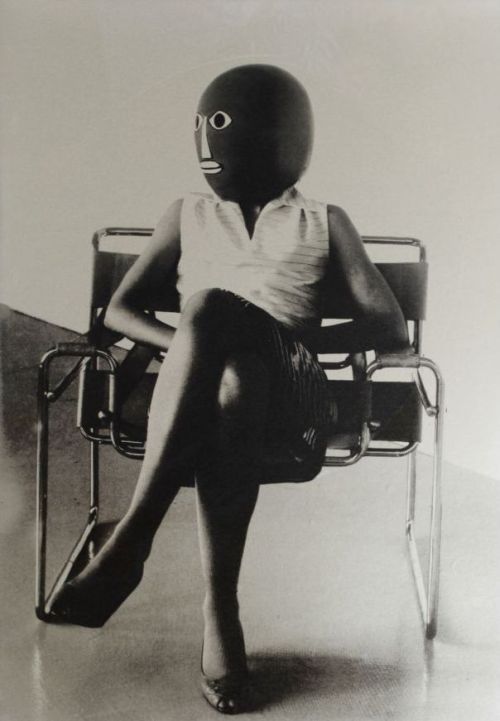
Unknown student in Marcel Breuer Chair. | Photo by Ursula Mayer
Bauhaus school was creating a nucleus of interdisciplinary innovation, which combined craft and design. Rather than utilizing the traditional model of teacher student relations, Bauhaus fostered community as the foundation of learning. Part of this ideology was also the integration of women artists in this community.

But Gropius also believed that men and women’s brains operated differently, men had the capacity to think in three dimensions while women not. Therefore many of women artists of the Bauhaus movement stuck to practices commonly regarded as women’s work, textiles and weaving. Men, on the other hand, become architects, sculptors and painters.

Otti Berger was a textile artist and weaver. | Photo by Julia Moholy-Nagy (1927)
A core member of the experimental approach to textiles, Otti Berger, experimented with methodology and materials during the course of her studies at the Bauhaus to eventually include plastic textiles intended for mass production. Along with Anni Albers and Gunta Stözl, Berger pushed back against the understanding of textiles as a feminine craft and utilized rhetoric used in photography and painting to describe her work. During her time in Dessau, she also wrote a treatise on fabrics and the methodology of textile production, which stayed with Gropius and was never published. Berger is the only designer from Bauhaus who sought patents for her textiles and became a deputy to designer Lilly Reich in the textile workshop at Bauhaus.

Otti Berger and Atelier Dessau by Lotte Beese (1930). | Photo Jeanine Fiedler
Not allowed to work in Germany under Nazi rule because of her Jewish roots, Berger closed her company down in 1936 and fled to London, where attempts to emigrate to United States to work with her fiancee Ludwig Hilberseimer and other Bauhaus professors failed.

Otti Berger’s Tactile Board (1928). | Image © Bauhaus-Archiv Berlin
One of the first women who join the Bauhaus Department of Architecture in 1927 and the first to study with Hannes Meyer and Hans Wittwer was german architect and urban planner Lotte Stam-Beese. She worked on the reconstruction of Rotterdam after World War II.


Lotte Beese built Pendrecht, the first car-free street in Rotterdam as well the Netherlands (1947). | Photo via Architectureguide
After the second World War the influence of Bauhaus developed in the US. One of the pioneering designer and entrepreneur who created the modern look of America’s postwar corporate office was Florence Knoll Bassett. She studied under Ludwig Mies van der Rohe, Eliel Saarinen and worked with leaders of Bauhaus, including Walter Gropius, Marcel Breuer, and Wallace K. Harrison.

Florence Knoll promoted the Modernist merger of architecture, art and utility in her furnishings and interiors, especially for offices. | Photo © Knoll Archive

The Hairpin Stacking Stool designed by Florence Knoll. | Photo © Knoll Archive
The influences of Carl Koch, Walter Gropius and Ludwig Mies Van Der Rohe are evident in many of Gertrude Kerbis's designs. In 1954 she received her master degree from the Illinois Institute of Technology in Chicago under Ludwig Mies van der Rohe and Walter Peterhans.

Gertrude Kerbis was a couple of decades ahead of her time; a woman in a sea of men wearing white shirts and ties. | Photo via Vimeo
Kerbis began her career when women at architecture firms were receptionists or secretaries. To change that she founded the Chicago Women in Architecture in 1973. She played a leading role in designing several major examples of American modernism, including the Lustron houses, the US Air Force Academy and the O'Hare International Airport Rotunda.

The dining hall’s interior of US Air Force Academy was column-free with a roof of steel trusses supported by sixteen columns. | Photo via Docomomo
Marianne Brandt, a strong and independent New Woman of the Bauhaus, was one of few women who distanced herself from the fields considered more feminine at the time such as weaving or pottery.

Brandt's designs for metal ashtrays, tea and coffee services, lamps and other household objects are now recognized as among the best of the Weimar and Dessau Bauhaus. Further, they were among the few Bauhaus designs to be mass-produced during the interwar period, and several of them are currently available as reproductions.
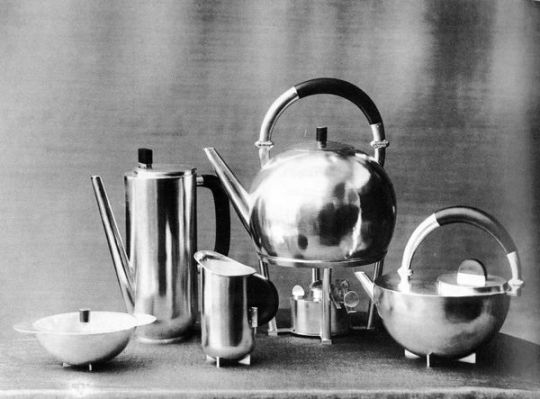
Coffee and tea set by Marianne Brandt (1924). | Photo by Lucia Moholy
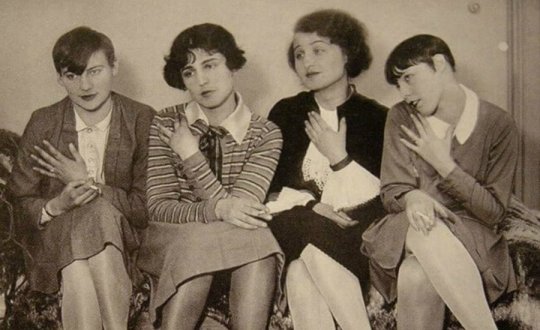
The modern women Alexa von Porewski, Lena Amsel, Rut Landshoff, unknown before 1929. | Photo by Umbo and Paul Citroen, Berlinische Galerie.
167 notes
·
View notes
Photo

Residential - Apartment W. #pournoir #doumanpourlabor #residentialdesign #tobiascarpa #knoll #brass #naturalmaterials #bespoke #interiordesign #interiors #berlindesigner #kreuzberg #furnituredesign #handcrafted #collectibledesign #residentialarchitecture #altbau (at Kreuzberg, Berlin, Germany) https://www.instagram.com/p/BvY2PnlhcN1/?utm_source=ig_tumblr_share&igshid=l5mun8jhuzms
#pournoir#doumanpourlabor#residentialdesign#tobiascarpa#knoll#brass#naturalmaterials#bespoke#interiordesign#interiors#berlindesigner#kreuzberg#furnituredesign#handcrafted#collectibledesign#residentialarchitecture#altbau
3 notes
·
View notes